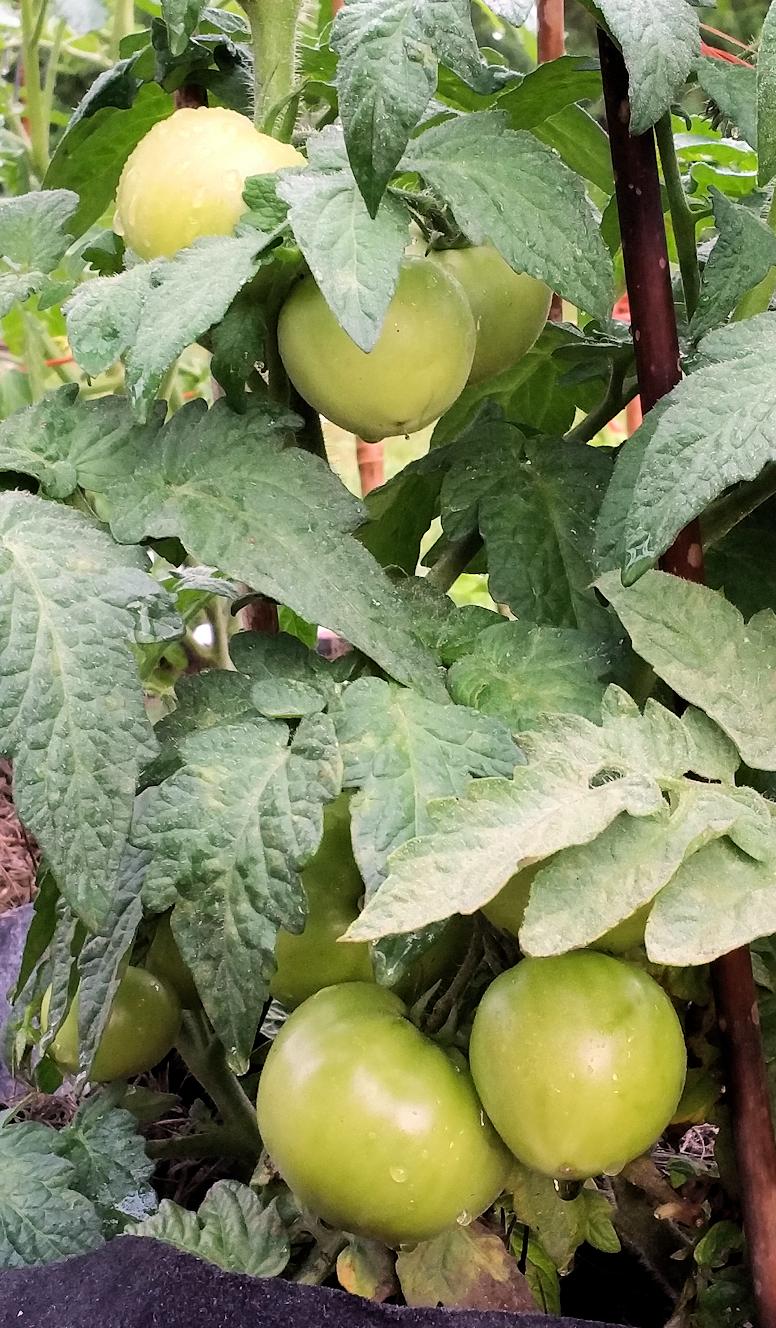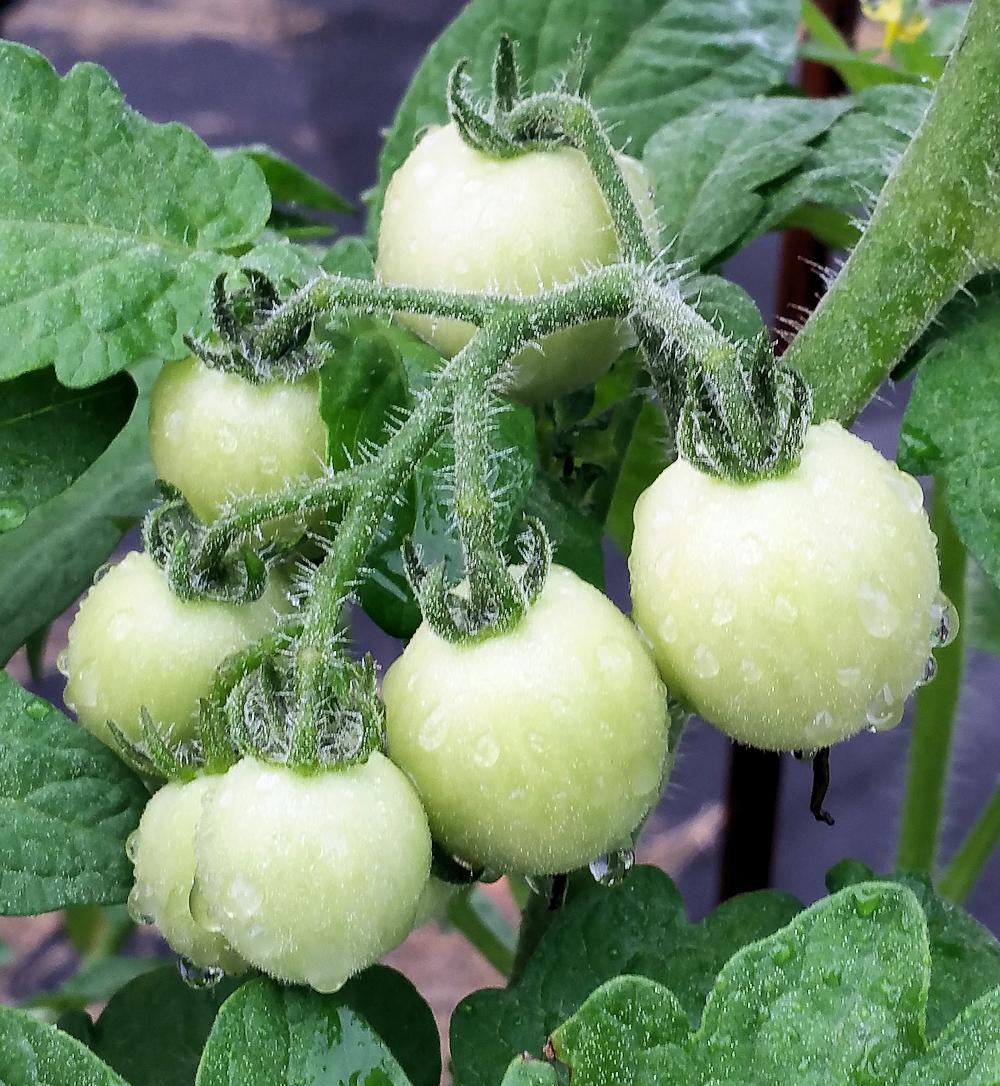Growing Tomatoes in South Florida
Growing tomatoes in South Florida seems like it would be easy, right? Lots of sunshine, plenty of rain. That’s good, but what isn’t is the evil twins of high heat and high humidity. In the summer, anyway. Let’s talk about growing tomatoes in South Florida.
Seasons in the Sun
For the most part, we don’t have much in the way of freezing weather here in South Florida. Sure, we do get cold snaps in the winter, and we do see the occasional frosts and freezes, but for the most part, winter is mild for the plants. If you’re able to cover your tomato plants when a frost hits, there’s a good chance it will survive.
From about late January through the end of April is our prime growing season, give or take a week or two in either direction. It’s basically mimicking what happens in the more northerly parts of the county – just several months earlier.
Our secondary growing season is from about the middle of August through to about Thanksgiving. We start out really hot, and it doesn’t start cooling down until around late September. However, by then the tomato plants are in flower and have less of an issue with setting fruit.
So….what about Summer?
Summer and the Evil Twins
It’s hot here. It’s humid. There are tons of insects. What’s not to like? 😉
Seriously, while tomato plants like the heat, they don’t like humidity — at least, not for months at a time. Our nighttime lows are the summertime highs in other parts of the country. And that is the big problem.
Tomatoes – most varieties that is – don’t set fruit well in high sustained heat, especially when they don’t get a chance to cool off at night. The large-fruited varieties are especially prone to either dropping their flowers, or not flowering at all when it gets really hot.
The humidity takes a toll as well. Various kinds of tomato blights thrive in humid weather; the bacteria and fungus move in and the leaves start turning yellow and brown or black spots – yuck!
Now, this isn’t to say that you can’t grow tomatoes in South Florida in the summer — just that it is way more challenging.
Tomato Varieties for South Florida
In the late winter through mid-spring growing season, you can grow just about any variety. Peruse the catalogs and online stores for intriguing tomatoes. Just remember that if you plan to grow your plants from seeds, you need to plant those seeds (indoors) around the beginning of December. (I have a video that I’m finishing up that talks about planting seeds; I’ll post that here when I have it ready.)
Alternately, if you’re like me in some years, you can purchase your starts from a nursery or big box store and transplant them into the garden. I tend to do a little of each, LOL.
Either way, your best bet is to get them into your garden by the middle to end of February.
Some larger-fruited varieties I have grown successfully include Kellog’s Breakfast, Cherokee Purple, Black Krim, Pineapple and Red Beefsteak. Other varieties I like are Better Bush, Eva Purple Ball, Loxahatchee, Black Prince and Druzba.
I’ve also grown Pink Brandywine — the only issue I have with it is a low production; I don’t get all that many tomatoes (although the ones I do get can be huge).
Of course I’ve grown far more than just the ones I’ve listed — these are just the ones that stand out in my memory. Wait — what about cherry tomatoes?
Cherry Tomatoes
These are the saving grace for those of us who are homegrown-tomato-starved during the summer (and all year around, actually). Cherry tomatoes tend to still produce during the high heat and humidity. Maybe not as much as during the cooler parts of the year, but you can still grow them.
I’ve grown all sorts of cherry tomatoes, including Black Cherry, Husky Cherry Red, Isis Candy, SuperSweet 100, and Juliet to name a few. It’s getting to be late March, and I am still planting cherry tomato seeds for summertime snacking and salads. This summer I am going to try Indigo Cherry Drops and Rapunzel. I’m also going to try to keep my existing varieties (Isis Candy, Black Cherry, Juliet and Husky Cherry Red) growing.
Native Soil in South Florida
Can you say “terrible” (except for the area around Lake Okeechobee)? It’s sandy before you hit a hardpan of clay, and devoid of nutrients. The only way you can deal with it is to incorporate a lot of compost. And I do mean a lot — when I was doing in-ground gardening, I easily used 80 bags of compost when I got started. Fortunately, every year your soil will get better and better with the compost, and you will only need to add smaller amounts.
Your other options are raised beds or container gardening.
Insects
One last word is about insects. Tomato hornworms can decimate a good-sized plant overnight, and we get plenty here. Aphids can also be a problem. Fire ants are also issues (oh how I hate them!).
Nematodes can be a problem. Marigolds planted among your tomatoes will help with that. Or, do as I did — I moved everything to containers.
In the warmer, wetter parts of the year, you’ll also need to allow for mosquitoes. The tomatoes won’t suffer from them, but you will! You can’t get rid of them, but you can try to keep your garden dry (no standing water) as well as strategically place some plants that mosquitoes tend to not like around your garden. This year, I got some lemongrass cuttings and put them in 3 gallon pots. When they root and start growing well, I will transplant them to 5 or 7 gallon containers and move them around in the garden. We’ll see if it works!


Leave a Reply